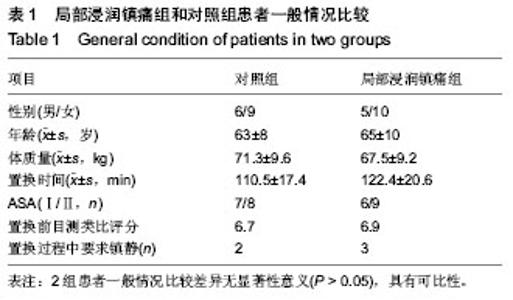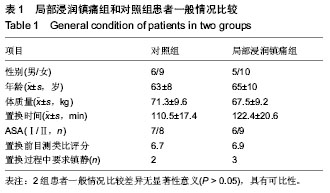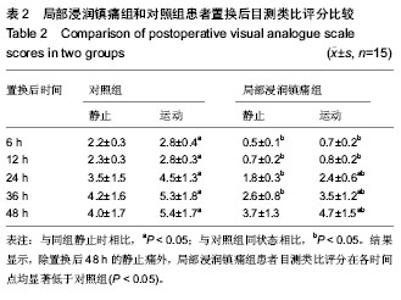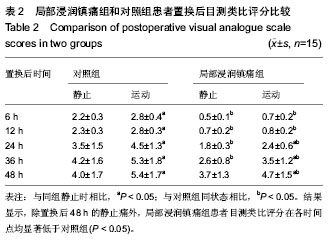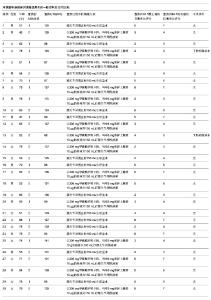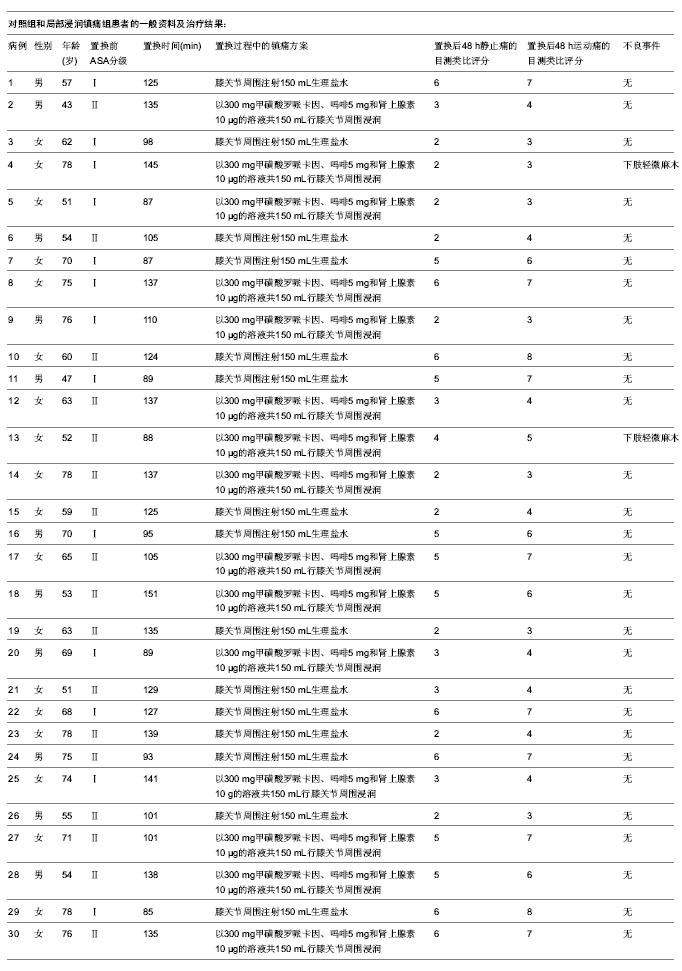| [1] Buvanendran A, Kroin JS, Della Valle CJ, et al. Perioperative oral pregabalin reduces chronic pain after total knee arthroplasty: a prospective, randomized, controlled trial. Anesth Analg. 2010;110(1):199-207.[2] James EP, Aman A, Ji MC, et al. Femoral Nerve Block Improves Analgesia Outcomes after Total Knee Arthroplasty: A Meta-analysis of Randomized Controlled Trials. Anesthesiology. 2010;113(5):1144-1162.[3] Buvanendran A, Tuman KJ, McCoy DD, et al. Anesthetic techniques for minimally invasive total knee arthroplasty. J Knee Surg. 2006;19:133-136.[4] Ilfeld BM, Hadzic A. Walking the Tightrope after Knee Surgery: Optimizing Postoperative Analgesia while Minimizing Quadriceps Weakness. Anesthesiology. 2013;118(2): 248-250.[5] Trueblood A, Manning D. Analgesia following total knee arthroplasty. Curr Opin Orthop. 2007; 18(1):76-80.[6] Otten C, Dunn K. Mulitmodal Analgesia for Postoperative Total Knee Arthroplasty. Orthop Nurs. 2011; 30(6):373-380.[7] Walter BJB, Thomas KF. Prevention and treatment of stiffness following total knee arthroplasty. Curr Orthop Pract. 2008; 19(2):174-175.[8] Lanplot JD,Wagner ER,Manning DW. Multimodal Pain Management in Total Knee Arthroplasty.A Prospective Randomized Controlled Trial. J Arthroplasty. 2013. pii: S0883-5403(13)00418-X. [9] Barrington MJ, Olive D, Low K, et al. Continuous femoral nerve blockade or epidural analgesia after total knee replacement: A prospective randomized controlled trial. Anesth Analg. 2005; 101:1824-1829.[10] Paul JE, Arya A, Hurlburt L, et al. Femoral nerve block improves analgesia outcomes after total knee arthroplasty: A meta-analysis of randomized controlled trials. Anesthesiology. 2010;113:1144-1162.[11] Charous MT, Madison SJ, Suresh PJ, et al. Continuous femoral nerve blocks: Varying local anesthetic delivery method (bolus versus basal) to minimize quadriceps motor block while maintaining sensory block. Anesthesiology. 2011; 115:774-781.[12] Sharrook NE, Hargelt MJ, Urquhart B, et al. Effects of Epidural Anesthesia on the Incidence of Deep Vein Thrombosis Following Total Knee Athroplasty. Anesthesiology. 1989; 71(3A):A1158.[13] Galimba J. Promoting the Use of Periarticular Multimodal Drug Injection for Total Knee Arthroplasty. Orthop Nurs. 2009; 28(5):250-254.[14] Cynthia L, Kathleen G, Kimberly M, et al. Effectiveness of Multimodal Pain Management Protocol in Total Knee Arthroplasty Patients. Orthopaedic Nursing. 2012; 31(3) 153-159.[15] Campbell A, McCormick M, McKinlay K, et al. Epidural vs. lumbar plexus infusions following total knee arthroplasty: randomized controlled trial. Europ J Anaesthesiology. 2008; 25(6):502-507.[16] Per E, Kjell A, Elisabeth A, et al. Local Infiltration Analgesia Versus Intrathecal Morphine for Postoperative Pain Management After Total Knee Arthroplasty: A Randomized Controlled Trial. Anesthesia Analgesia. 2011; 113(4): 926-933.[17] Andersen LO, Husted H, Otte KS, et al. High-volume infiltration analgesia in total knee arthroplasty: a randomized, double-blind, placebo-controlled trial. Acta Anaesthesiol Scand. 2008;52:1331-1335.[18] Busch CA, Shore BJ, Bhandari R, et al. Efficacy of periarticular multimodal drug injection in total knee arthroplasty. A randomized trial. J Bone Joint Surg Am. 2006; 88:959-963.[19] Essving P, Axelsson K, Kjellberg J, et al. Reduced morphine consumption and pain intensity with local infiltration analgesia (LIA) following total knee arthroplasty. Acta Orthop. 2010; 81: 354-360.[20] Spreng UJ, Dahl V, Hjall A, et al. High-volume local infiltration analgesia combined with intravenous or local ketorolac+morphine compared with epidural analgesia after total knee arthroplasty. Br J Anaesth. 2010; 105:675-682.[21] Thorsell M, Holst P, Hyldahl HC, et al. Pain control after total knee arthroplasty: a prospective study comparing local infiltration anesthesia and epidural anesthesia. Orthopedics. 2010; 33:75-80.[22] Toftdahl K, Nikolajsen L, Haraldsted V, et al. Comparison of peri- and intraarticular analgesia with femoral nerve block after total knee arthroplasty: a randomized clinical trial. Acta Orthop. 2007; 78:172-179.[23] Stalman A, Tsai JA, Segerdahl M, et al. Ketorolac but not morphine exerts inflammatory and metabolic effects in synovial membrane after knee arthroscopy: a double-blind randomized prospective study using the microdialysis technique. Reg Anesth Pain Med. 2009; 34:557-564.[24] Johan CR. Local Infiltration Analgesia for Pain After Total Knee Replacement Surgery: A Winner or Just a Strong Runner-Up? Anesthesia Analgesia. 2011; 113(4):684-686.[25] Berend KR, Lombardi AV Jr, Mallory TH. Rapid recovery protocol for peri-operative care of total hip and totla knee arthorplasty patients. Surg Technol Int. 2004;13:239-247.[26] Skinner HB, Shintnai EY. Results of a multimodal analgesic trila involving patients with total hip or total knee arthorplasty. Am J Orthop. 2004;33(2):85-92.[27] Carli F, Clemente A, Asenjo JF, et al. Analgesia and functional outcome after total knee arthroplasty: periarticular infiltration vs continuous femoral nerve block. Br J Anaesth. 2010; 105: 185-195.[28] Essving P, Axelsson K, Kjellberg J, et al. Reduced hospital stay, morphine consumption, and pain intensity with local infiltration analgesia after unicompartmental knee arthroplasty. Acta Orthop. 2009; 80:213-219.[29] Adam KJ, Carlos BM, Hans PS, et al. Perioperative Nerve Injury after Total Knee Arthroplasty: Regional Anesthesia Risk during a 20-Year Cohort Study. Anesthesiology. 2011;114:311-317.[30] Raj PP, Knarr DC, Vigdorth E, et al. Comparison of continuous epidural infusion of a local anesthetic and administration of systemic narcotics in the management of pain after total knee replacement surgery. Anesth Analg. 1987; 66(5):401-406.[31] 王平.罗哌卡因复合舒芬太尼在产妇分娩镇痛中的应用[J]. 四川医学,2011,32(6):894-895.[32] Allen DJ, Chae-Kim SH, Trousdale DM. Risks and complication of neuraxial anesthesia and the use of anticoagulation in the surgical patient. Proc (Bayl Univ Med Cent). 2002;15(4):369-373.[33] Koh IJ, Kang YG, Chang CB, et al. Additional pain relieving effect of intraoperative periarticular injections after simultaneous bilateral TKA: a randomized, controlled study. Knee Surg Sports Traumatol Arthrosc. 2010;18:916-922. |
